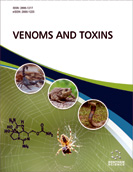Abstract
Background: G. elegans is a highly useful medicinal plant with broad and superior clinical pharmacological effects. However, it also exhibits high toxicity to humans, so it must be used with extreme caution in clinical practice. Previous studies on G. elegans have mainly focused on its main ingredients from perspectives of pharmaceutical analysis, pharmacokinetics, and pharmacodynamics. The kinetic behavior of G. elegans' main metabolites in vivo has not yet been reported, which is also crucial for studying the herb's toxification and detoxification process.
Aims: This study aimed to establish a quantitative method to describe the metabolic profile of the two main metabolites of koumine after oral administration of G. elegans to rats.
Objective: The objective of this study was to test two major metabolites of G. elegans in rat urine after administration using a rapid and sensitive high-performance liquid chromatographic-tandem mass spectrometric (HPLC-MS/MS) method developed in advance.
Methods: A Kromasil C18 column was used as the stationary phase for chromatographic separation, with an isocratic mobile phase consisting of mixture of water (2 mM ammonium formate), formic acid, and methanol (25:0.05:75, v/v/v) at a flow rate of 0.40 mL/min. The mass spectrometer was equipped with an electrospray ionization (ESI) source operating in positive ionization mode, and detection was performed using a selective reaction monitoring (SRM) mode. Detection was performed in selective reaction monitoring (SRM) mode. Protein precipitation was used to pretreat the rat urine samples before analysis, with acetonitrile as the precipitation solvent. In this study, a "relative quantification" strategy was employed, which avoided the expensive and timeconsuming separation of standard substances. The assay was validated in terms of specificity, linearity, precision, stability, recovery, and other aspects.
Results: The intra- and inter-day precision values were less than 12.7%. The recoveries at three different concentrations were all above 73.1%. The stability study showed that the analytes were stable during the experiment. The method was then used to study the kinetic profiles of N-demethylkoumine and N-oxidatekoumine in rat urine for the first time.
Conclusion: In this study, the established LC/MS method was fully validated and proven to be sensitive and accurate for the simultaneous determination of the two main metabolites of G. elegans in rats' urine samples. These results could provide references for the safe use of koumine and G. elegans in clinical applications.


